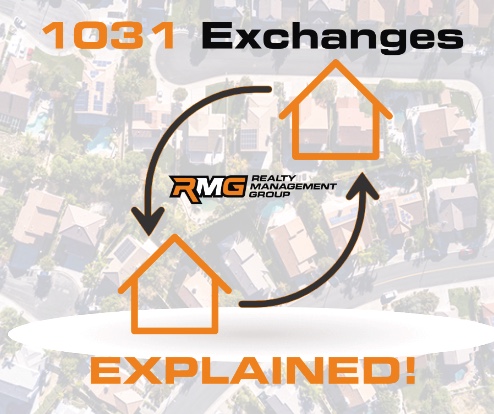1031 Exchanges - Everything You Need to Know As a Real Estate Investor
Real estate investors use a 1031 exchange tax deferment strategy to lower or eliminate their business tax liability. Generally, the process goes as follows: you swap or "exchange" a like-kind property for taxation purposes. This way, you avoid paying capital gains taxes during the year you sell a property, or you can defer taxes for much longer with estate planning.
In the real estate industry, the colloquial term for performing a 1031 Exchange is “trading up,” meaning you defer capital gains and depreciation recapture and instead use those gains to invest in another like-kind property. But take note that you will pay taxes at some point; a 1031 Exchange is far from tax avoidance because it’s been federal law for 100 years.
Nevertheless, this tax strategy is a proven way to build wealth with long-term financial planning, yet you have to follow the process to the letter for the U.S. Internal Revenue Service (IRS) to approve the exchange. Otherwise, you'll have no choice but to pay capital gains on real estate investments when you didn't necessarily need to pay in that particular year.
So, to make sure this unfortunate situation doesn’t happen to you, here are the essentials of what a 1031 Exchange is and how it can benefit your real estate portfolio.
What counts as a like-kind property in a 1031 Exchange?
The fastest way to understand a 1031 Exchange is to use a hypothetical example, and it's actually not too difficult to understand once you know the basics. Even better, it’s worth the time to get everything in order because you can use trading up to lower the tax liability overall, eventually paying less than you would have without the exchange.
Let's say that you purchased a multi-unit investment property at $3,000,000 last year, and it was a sound investment. The property is increasing in value, and you think the time to sell is now. So, instead of paying capital gains on the property’s sale, you can exchange tax liability for a similar property. The idea is that you shouldn’t have to pay taxes on investments that have yet to materialize.
Furthermore, the main stipulation for a proper 1031 Exchange is that the two properties in question must be like-kind, meaning that you won't be able to defer taxation for the aforementioned multi-unit investment property for an office building’s tax liability. The two properties must be of the same like and kind to be eligible, yet they don’t have to be of the same quality from an investment perspective.
Five types of 1031 Exchanges
That said, there's more than one type of 1031 Exchange to know about, including:
Delayed exchange
Simultaneous exchange
Delayed reverse exchange
Delayed build-to-suit exchange
Simultaneous built-to-suit exchange
The main difference between them relates to the timing of the swap, meaning when the replacement property changes ownership. For instance, a delayed reverse exchange is when you buy the replacement property before selling the current asset.
How to file for a 1031 exchange
Depending on how many exchanges you want to claim, you'll need to fill out Form 8824 for each property and include the paperwork with your federal income tax return. No matter how hard you try, there's no such thing as a catch-all 1031 Exchange where you can include all of your investments in one arrangement. The IRS makes you go through each claim one by one to ensure the process is fair to both the business owner and the federal government.
Again, leveraging 1031 Exchanges doesn’t mean that you’ll never pay taxes on capital gains from real estate sales. Remember that the purpose of these arrangements is to encourage investment instead of taxing profits, not penalize profitability.
Furthermore, after passing the Tax Cuts and Jobs Act in 2017, you can't use 1031 rules on personal property; the provisions now only apply to real property as defined by the IRS. Prior to 2017, you could use 1031 Exchanges differently, but the definition is narrower today. That's why asking for advice from a team of professionals is preferable, especially advice from a licensed accountant who can tell you which investments are eligible and which ones aren't.
To take advantage of a 1031 exchange, you must identify a property of equal or greater value, and you must identify up to 3 possible replacement properties. The replacement property must close escrow prior to 180 days.
Need more advice from the San Diego property management pros at Realty Management Group?
Contact us for more information about how investing in real estate can start building wealth.

By Scott Engle, Broker/Owner - Monday, December 6, 2021

